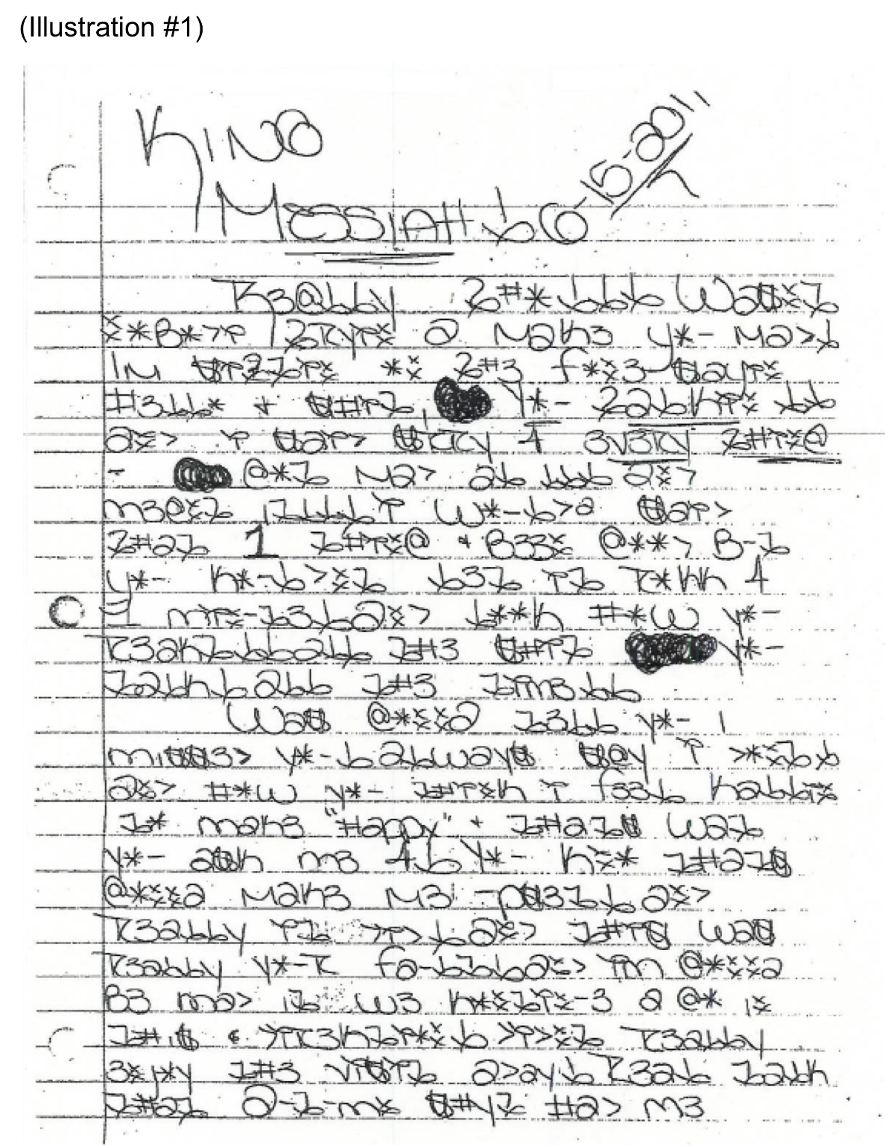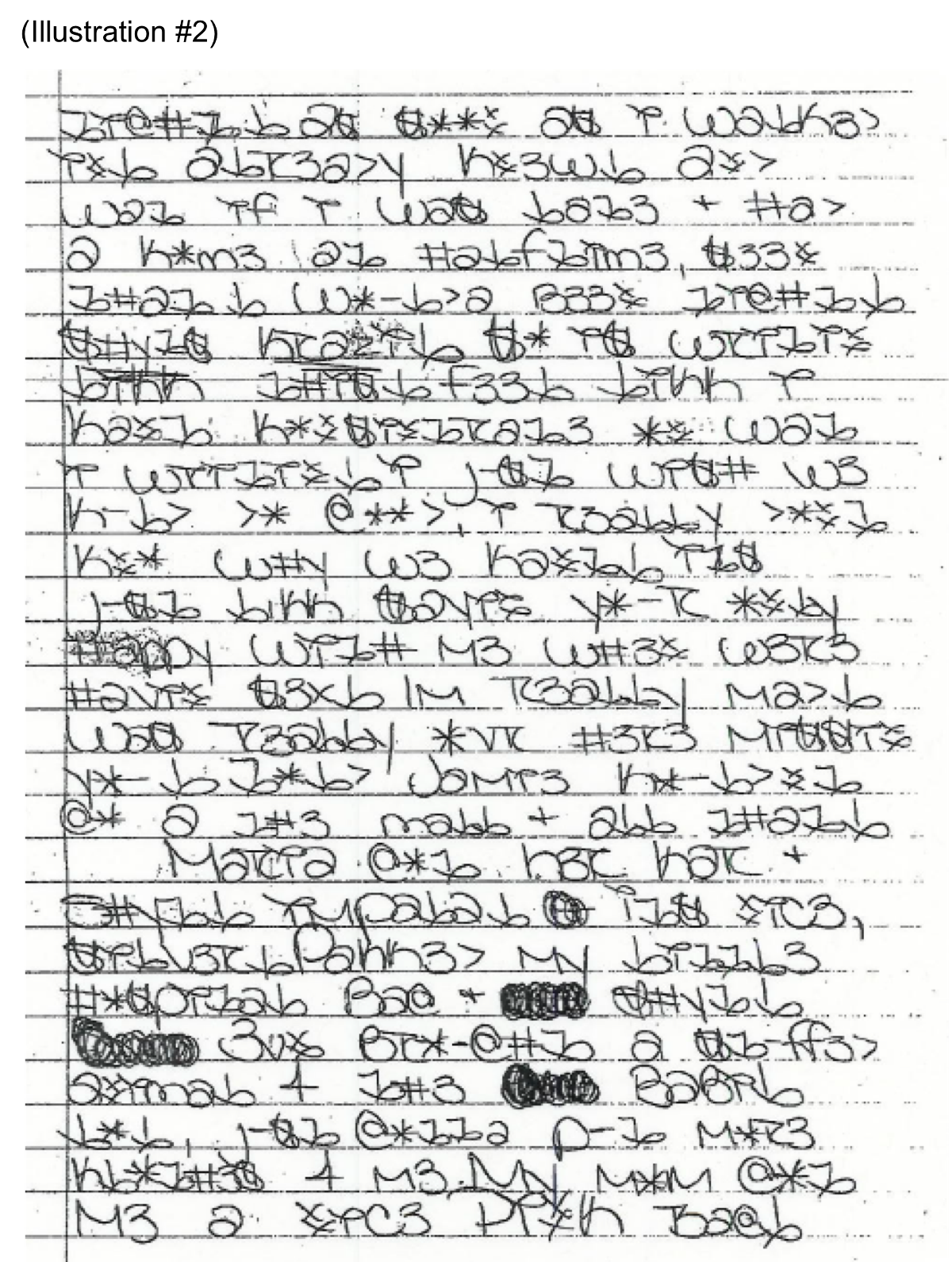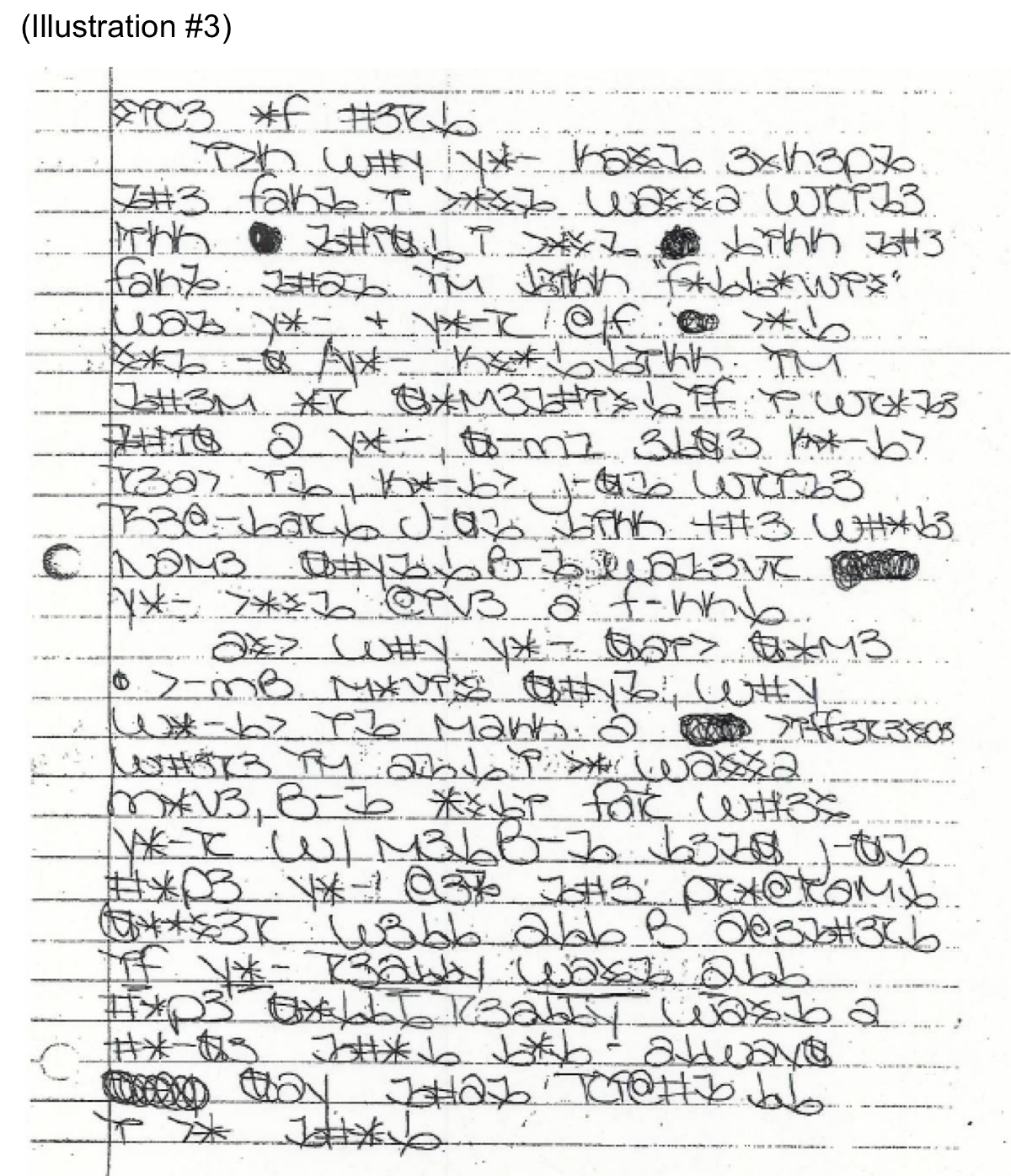Gang codes change, adapt and mutate just as any language does. As new words and concepts are added to language, they are also added to communications that gang members write in code. Gang codes have long used street and prison slang as part of the communication process. Now with the popularity of “texting” in our society, we see that texting abbreviations are being added to gang documents and written in code. But before we can try to understand the meaning of slang, we have to decipher the code…
I received an eight (8) page document that was confiscated in a correctional facility. Sample pages are shown in (Illustrations #1- #3).



As I examined these pages, I noticed that the document was written in a mix of English alphabet letters and code symbols. For example in the paragraph shown in (Illustration #4), I have indicated some words that helped to identify some of the code symbols. The words and symbols identified say: “to make you mad!”
In (Illustration #5) I have indicated the words and symbols that say: “on the fone sayin”.
By continuing this process of identifying the symbols used in this document, I was able to produce the following symbol template shown in (Illustration #6).
As you examine the symbol template, notice that the letters “C” and “K” use the same symbol. The symbol for the letter “A” and the number “2” (or word: “TO”) are the same symbol. Also adding to the confusion, the symbol for “!” and the letter “L” are nearly identical and the symbol for “?” and the letter “T” also appear to be the same. In addition, the writer uses incorrect symbols frequently, and just as frequently misspells words. In (Illustration #7) I have indicated some of these inconsistencies. I have indicated the word “REALLY” where the “@” symbol is incorrectly used as the letter “A”. The “@” is supposed to represent the letter “G”. The writer spells the word “NOBODY” as “NOBODI” and the word “SORRY” is spelled “SRRY”.
These types of errors are common in gang code documents. What caught my attention, what was “new” was the use of texting abbreviations in this document. You will find common texting abbreviations “OMG” (Oh My God), “IDK” (I Don’t Know) and “LOL” (Laugh Out Loud) throughout the eight (8) pages.
In (Illustration #8) the word “SOMEONE” is written “SUM 1”.
In (Illustration #9) the word “TOGETHER!” is written “2GETHER!”
In (Illustration #10) the writer uses “NE” for the word “ANY”. The portion indicated reads: “But didn’t you not want to do the program NE way?”
When you crack a gang code and identify the symbols used in the code, transcribing the document is just the start of understanding the content. You are going to have to be familiar with street and prison slang and now…the next thing is texting.
GS KLIVANS is a gang consultant and lecturer. He retired with the rank of Captain from the Westchester County (NY) Department of Correction (Peace Officer). Captain KLIVANS is a former District Attorney Investigator (Police Officer). He served in the US Army Reserve for 30 years in Military Intelligence and CID (Federal Agent).
He is the author of the book “Gang Secret Codes: Deciphered”, Police and Fire Publishing, Santa Ana, CA, www.amazon.com or, www.policeandfirepublishing.com
He can be contacted at: gsklivans@nycap.rr.com.



















